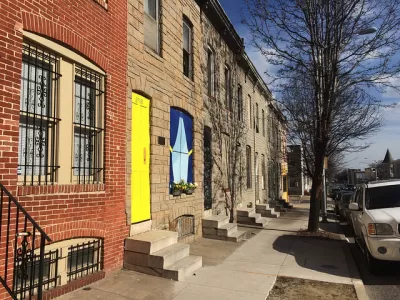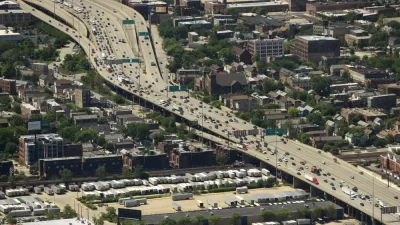As part of an interdepartmental effort, the city's planning department is embedding an explicit equity lens into how it considers the distribution of civic resources.

In response to a wave of violent crime, as well as racially charged incidents like the death of Freddie Gray, the city of Baltimore has undertaken an interdepartmental effort to understand the roots of urban inequality.
As Oscar Perry Abello writes, Baltimore "was the first city in the United States to pass an ordinance mandating separate neighborhoods for white and black households." Redlining ensued, resulting in a pattern of underinvestment that underscores today's problems.
After a "two-year internal soul-searching process," the planning department has developed an equity action plan to counter that legacy. Stephanie M. Smith, the planning department’s assistant director for equity, engagement, and communications, remarked, "This was a staff driven effort … acknowledging as staff that we inherited a legacy of decisions that have often been inequitable, often decisions from the planning agency itself, and we are in the present grappling with some of those decisions."
Abello writes, "Leveraging the planning department's role in the capital budget process is one of the five goals of the equity action plan. Using the data they've gathered on where city capital investment dollars have been spent, they can raise the equity question throughout the process."
FULL STORY: Baltimore Reckons With Its Legacy of Redlining

Study: Maui’s Plan to Convert Vacation Rentals to Long-Term Housing Could Cause Nearly $1 Billion Economic Loss
The plan would reduce visitor accommodation by 25,% resulting in 1,900 jobs lost.

North Texas Transit Leaders Tout Benefits of TOD for Growing Region
At a summit focused on transit-oriented development, policymakers discussed how North Texas’ expanded light rail system can serve as a tool for economic growth.

Using Old Oil and Gas Wells for Green Energy Storage
Penn State researchers have found that repurposing abandoned oil and gas wells for geothermal-assisted compressed-air energy storage can boost efficiency, reduce environmental risks, and support clean energy and job transitions.

Private Donations Propel Early Restoration of Palisades Playground
Los Angeles has secured over $1.3 million in private funding to restore the Pacific Palisades playground months ahead of schedule, creating a modern, accessible space that supports community healing after recent wildfires.

From Blight to Benefit: Early Results From California’s Equitable Cleanup Program
The Equitable Community Revitalization Grant (ECRG) program is reshaping brownfield redevelopment by prioritizing projects in low-income and environmental justice communities, emphasizing equity, transparency, and community benefits.

Planting Relief: Tackling Las Vegas Heat One Tree at a Time
Nevada Plants, a Las Vegas-based nonprofit, is combating the city’s extreme urban heat by giving away trees to residents in underserved neighborhoods, promoting shade, sustainability, and community health.
Urban Design for Planners 1: Software Tools
This six-course series explores essential urban design concepts using open source software and equips planners with the tools they need to participate fully in the urban design process.
Planning for Universal Design
Learn the tools for implementing Universal Design in planning regulations.
Ascent Environmental
Borough of Carlisle
Institute for Housing and Urban Development Studies (IHS)
City of Grandview
Harvard GSD Executive Education
Toledo-Lucas County Plan Commissions
Salt Lake City
NYU Wagner Graduate School of Public Service





























